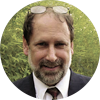When I was in chiropractic school ... errr ... a couple decades ago now, I was quite the troublemaker. I was one of a renegade group of students that was always trying to get speakers on campus who were on the cutting edge of their fields, particularly individuals in research and practice development.
Having come armed with a bachelor's degree from a research university, this was quite an odd thing for me to see, particularly since the above-mentioned incident was not an isolated one. I mean, one of my undergraduate professors in a molecular biology class had won a Nobel Prize for a little discovery (the structure of DNA), and if anything, his "expertise" and "authority" on the matter made him one of the most challenged and questioned by his peers.
Another time, as a chiropractic student, I attended one of the first interdisciplinary spine conferences at which a chiropractor was a presenter. Similar to my undergraduate training, the lectures and panel discussions were extremely rigorous, and people challenged each other's research, theories and presentations in a very spirited and public manner. One such exchange between two orthopedists, Harry Farfan and Alf Nachemson, was particularly heated, and the chiropractor, Jim Cox, was also taken to task pretty well - but nowhere near the degree to which they took each other on (and more intense by orders of magnitude than the "spat" that occurred between the two DC technique developers I tried to get to debate their perspectives on campus).
The most illuminating part of this tale came afterward, while I was sitting in the hotel bar. Drs. Nachemson and Farfan came sauntering in, arms around each other's shoulders, laughing about "how good they got each other" in their respective talks, and commenting, "just wait until next year." They talked for hours, continuing to challenge each other's models, data, and theories in the most robust way. But not for a second did those challenges undermine one another or their respect for each other. They had the professional maturity to separate their emotions from the issues on the discussion table.
The tradition of skeptical criticism and inquiry is a central one to academic crossfire, and one of the reasons scientific theories evolve is because they are subjected to such criticism. They become stronger for the wear - as do the professions that engage in such dialog. Neither of these two orthopedists would consider the other "anti-orthopedic" or "anti-medical" for the challenges he proffered. In fact, they both strongly recognized the importance of the critical engagement in developing and strengthening their respective theories and practices, and their professions.
Something important happened in chiropractic recently. At the 10th annual Research Agenda Conference (RAC) in Las Vegas a few weeks ago, several sessions involved spirited discourse among practitioners and researchers in chiropractic - the magnitude of what I had witnessed two decades ago at the spine conference. Many of our profession's sacred cows, such as the use of X-ray for biomechanical assessment, priorities in research design accounting, and whether they account for holistic and vitalistic perspectives, were on the table for debate. And the discourse was no-holds-barred, but fully collegial, and involved passionate hallway discussions that continued beyond the podium. It was tangible, and many attendees commented about the subtle but observable leap in scientific discourse that took place.
Professional maturity is defined by one's ability to separate emotional feelings from the issues. Lawyers do it. It's the very nature of higher academia and science. Every health care profession does it. With the ability to legitimately challenge the substance of our beliefs and the biases of our observations comes cultural authority. Rather than "tearing down" one's profession, this kind of behavior is one of the pillars that gives it social legitimacy. Public self-reflection and critical appraisal on the validity of our assertions and practices give the world confidence that we are in fact the seekers, developers and refiners - the scientists, if you will - of chiropractic knowledge.
This year's RAC was a very fulfilling experience for me, but it was also attenuated by a cold dose of reality. As Dr. Scott Haldeman pointed out at the conference, some 50 percent of all members of his other discipline (spine neurology) routinely show up at their research conferences to engage in such discourse. Sadly, less than 400 chiropractors showed up to this year's RAC (that's under 1 percent of us in North America). Although the level of debate in the science of chiropractic, and the resultant gain in professional maturity, are growing exponentially, the level of interest in research and "research consumerism" continues to falter in the profession as a whole.
I suspect that as evidence-based practice initiatives continue to infiltrate all things health care, chiropractors may find themselves not only more interested in keeping up with the literature, but also more involved in observing the research enterprise firsthand at conferences like RAC. It's interesting, it's invigorating, and it's essential. I can't wait until next year!
Robert Mootz, DC
Associate Medical Director for Chiropractic,
State of Washington Department of Labor and Industries
Olympia, Washington
Click here for previous articles by Robert Mootz, DC.





